“Inquire, Negate & Repeat,” which featured the work of four student artists, were large, clean, and thought-provolking about nature, especially dolphins. The show included sculptures, ceramics, fiber art, paintings, and drawings. It opened at the Parks Exhibition Center at 6 p.m. on Friday, May 21, and will run until May 28.
The show’s title, “Inquire, Negate & Repeat,” came from a meditation, said Jade, one of the artists. The others included Anna, Angelica and Karina.
“Anna is the ceramics guru of our department,” said one student.
It was easy to see why they were in awe. Anna’s ceramics were outstanding. As you walked into the show, and looked to the left, there were a variety of her ceramic “flowers,” in variable dimensions with mirrors inside, all mounted to the wall. The arrangement was called, “Frames of Mind.”
“That would make a great statement in your home’s entryway,” said one Idyllwild resident.
Anna had four other equally outstanding ceramic pieces, including a large ceramic basket, with dainty flowers nestled inside. The piece also had fine wires for stems, and a rope edge to the basket.
Three other ceramic pieces by Anna were maddenly entitled, “Untitled.”
“I don’t know if artists don’t like to title their work, or if they just forgot,” said another art student later. “The titles should really help you understand the pieces, especially if the artist isn’t there to help explain things.”
The top of the larger “Untitled” ceramic by Anna (on the shelf) had a top that resembled a leafy vegetable. Like the flowers in the other flower basket, they appeared live, and not ceramic.
“People 2010,” was Anna’s final ceramic installation, which resembled a chessboard full of kings and rooks. Or, a closed city made up only of castles with no surrounding countryside.
The finish on the “People 2010” pieces were crackled, or antique looking with neutral glazes.
“Angelica, your work is some of the best I’ve seen here,” said Samuel, a voice major in the school van later.
Angelica’s sculptures and ceramic painting were large, clean and thought-provolking.
The first thing everyone saw was the mixed media sculpture on the floor entitled, “Separation of Ego,” which had a deer’s head at the front, a woman’s torso with a maroon portrait painted on its chest, and a woman’s legs pointing upward at the back. Each of these sections was separated by panes of glass.
The woman’s portrait on the torso of “Separation of Ego,” also appeared in her ceramic painting on the wall entitled, “The Glass Bead Game,” and in the alabaster sculpture, “The Shower.”
“It looks like a self portrait, but they could be different,” said Miriam-Grace, another visual artist, later. “I saw her working on it from a photograph.”
The ceramic portrait was sectioned off into squares, that looked like ceramic tiles. Attached in random places were ceramic flowers, in a pretty glaze.
Angelica’s final piece, a sculpture called, “The Shower,” was created in alabaster. The face was delicately carved, but the torso was left rough and unfinished. Its smooth and roughness beckoned people to touch it.
If you were to squint, the rough parts could be considered soap suds in a shower.
“I got a chance to carve a little bit on it,” added Miriam-Grace. “It’s not particularly a soft stone, but you have to be careful. There are many cracks inside, and pieces can come off in chunks.”
The show then switched from hard to soft sculpture with Jade’s “Knit Up in Sleep Performance,” a 24-foot black and white acrylic yarn sculpture that was draped over a black wire chair.
The title car read, “24 feet and expanding,” which gave the impression that she wasn’t finished yet. The balls of yarn left under the chair were also a good indication that she might finish it over the summer.
Along the wall next to the yarn sculpture were black and white ink drawings, all uniform in size, yet organic in subject matter. Some looked like amoebas or pieces of yarn under a microscope. They were all mounted to four large boards and entitled, “864-Static.”
As much as I like titles to pieces, “864-Static,” didn’t help me one bit. Was the number an equation? It certainly was more than the 100 or so drawings mounted to the boards. Was it an apartment number? Or the number of strokes from her pen?
Karina’s “Herd” installation, “Swarm” print, “Flock/Pod” drawing and “Burnt Ball” acrylic painting all had a focus on nature.
Luckily, she was still around talking to friends towards the end of the show. She said that the 100 or so small antelope looking pieces were made of resin.
“I took a mold (of a plastic buck) and filled it with resin,” Karina explained. “As you can see, some of them turned out better than others.”
All were arranged in a swirling, migration formation, from right to left, and mounted on a light box.
“The light box was the hardest part to make,” Karina confessed. “I wanted to resemble a herd migration, like something that you’d see on the Nature Channel.”
Side by side on the far wall were two tall pieces, one a painting, the other a drawing on vellum. The drawing, “Flock/Pods,” showed a creative ariel view of birds (a flock) in flight over pods of dolphins swimming in the ocean.
Logistically, she put the flocks on vellum, as an overlay, to the drawing of the many dolphin pods underneath. Although only created in black graphite, the drawings were strong and solid. Her ariel view you could only see in a helicopter or plane. It was a God’s eye view.
It’s sister painting, created in bright acrylics, “Burnt Ball,” gave me pause. It was also an ariel view of a sun overlooking dolphin pods in the ocean. Although beautiful, something about it was unsettling. Karina and all of the other patrons had gone, and I was left alone with “Burnt Ball,” and my unsettling thoughts about dolphins and the Academy Award-winning documentary, “The Cove.”
Having an inquiring mind about animals, I wished Karina’s “Burnt Ball” was a statement about the depleting dolphin population in Taiji, Japan.
I had seen a viewing in Idyllwild at Movie Night at the Green Cafe (see Idyllwild Me blog post from March 30).
“Director Louie Psihoyos took home this year’s Oscar for Best Documentary for his stunning heist-like story that is about half Jacques Cousteau and half James Bond,” said Jeffrey Taylor, who showed “The Cove.” “A ‘dream team” of activists venture to Japan to expose the secretive work of a small community of fishermen who slaughter dolphins so they can sell the meat nationally and abroad.”
Richard O’Barry, who rose to popularity with “Flipper,” the popular TV show in the 1960s, said that he became an activist when one of the dolphins committed suicide right in front of his eyes.
“The next week, I was sitting in a jail cell for letting captive dolphins go,” O’Barry said in “The Cove.”
O’Barry collaborated with Psihoyos in creating “The Cove,” to get the word out of the massive dolphin slayings that are held each year from September to March in Japan. In a small cove in Taiji, fishermen herd dolphins in from the sea by forming a line of boats and making noises with metal poles. The process is known as “oikomi.”
“Dolphins are keenly sensitive to noise,” O’Barry said in the movie. “They are afraid of the noise and swim to the cove to get away from it. There, they are herded into nets and the bottle nosed dolphins like the ones in “Flipper” are sent to marine parks like “Sea World,” while the other dolphins are brutally slaughtered.
Many Japanese do not know that this is going on, and would likely not approve of it. In the documentary, tests prove that dolphin meat has toxic mercury levels, and is not good for human consumption. In fact, in the May 10th issue of the Japan Times, the National Institute of Minamata Disease (NIMD) stated that many Taiji residents as having unusually high levels of mercury. Taiji, where they have a tradition of eating whale and dolphin meat.
However, the more “inquiring minds” know, the better the chances of stopping it. For more information, Google “The Cove,” visit www.takepart.com, or text the word DOLPHIN to 44144.

the attachments to this post:








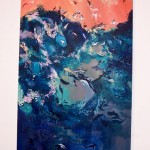
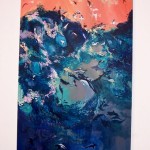
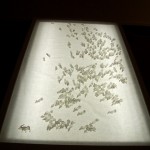
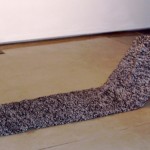
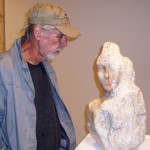

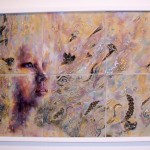

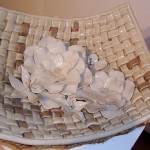
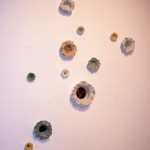

america is a nation who eat a lot of meat !I think we coubtries what is good or not I’m appalled by the massacre of those poor animals….I think the slaughter of those dolphin but I am choked by the murder of cheeps, horse, steer and yes, even pigs. A dolphin is a dolphin and cruelty is cruelty Nevertheless, we have to be a less canting and take care of the business of the others.